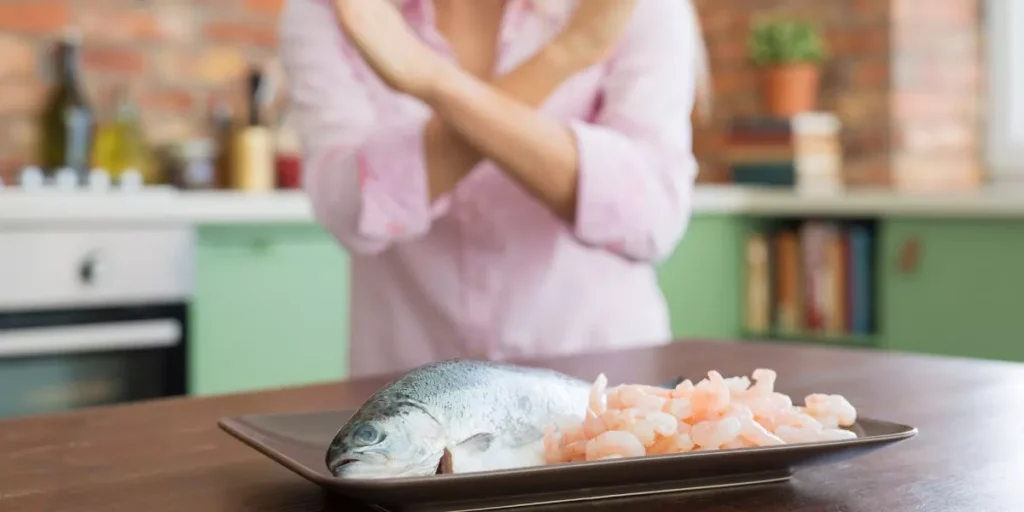
When it comes to preparing seafood, ensuring it is cooked just right can be a delicate balance. Factors like proper thawing, understanding cooking temperatures, and mastering cooking times are crucial in avoiding the pitfalls of overcooking or undercooking. But what about the visual cues that can guide you in achieving that perfect doneness? Stay tuned to discover how these cues, along with some expert tips, can elevate your seafood dishes to a whole new level of culinary excellence.
Understanding Seafood Cooking Temperatures
To ensure your seafood is cooked to perfection, understanding the appropriate cooking temperatures is crucial. Different types of seafood require specific internal temperatures to guarantee they’re safe to eat and delicious. For fish, the general rule is to cook until it reaches an internal temperature of 145°F (63°C). This ensures that the flesh is opaque and flakes easily with a fork.
Shrimp and other shellfish should be cooked until their flesh turns pearly and opaque, with an internal temperature of 120°F (49°C). When cooking scallops, aim for an internal temperature of 125°F (52°C) for the perfect texture.
If you’re grilling seafood, make sure the grill is preheated to the appropriate temperature before cooking. For fish, the grill should be around 450°F (232°C), while shrimp and scallops benefit from a slightly higher temperature of 500°F (260°C). By understanding these critical cooking temperatures, you can confidently prepare a variety of seafood dishes with excellent results.
Mastering Cooking Times for Different Seafood
For perfectly cooked seafood, mastering the cooking times for different types of seafood is essential. Each type of seafood has its own ideal cooking time to ensure it’s cooked to perfection.
Delicate fish like sole or flounder only need a few minutes per side to cook through, while thicker cuts like salmon or tuna may require a bit longer.
Shrimp and scallops cook quickly and can become rubbery if overcooked, typically needing just a few minutes until they turn opaque and firm.
For shellfish like mussels or clams, they’re done when their shells open, indicating they’re cooked.
Lobster and crab can take a bit longer to cook through due to their size and density. By knowing the specific cooking times for different seafood, you can avoid the common pitfalls of overcooking or undercooking, ensuring a delicious meal every time.
Using Visual Cues to Determine Doneness
As you cook various types of seafood, pay close attention to the visual cues that indicate when each type is perfectly done. For fish fillets, look for the flesh to turn opaque and easily flake with a fork. Shrimp will curl up and turn pink when thoroughly cooked, while scallops become firm and opaque. Lobster and crab shells will turn bright red and the meat will be white when fully cooked. When grilling octopus, it should have charred marks on the outside and be tender inside.
When cooking mussels and clams, they’re done when their shells open. Discard any that remain closed as they’re likely not safe to eat. For squid, it should be cooked quickly over high heat until opaque and tender. Tuna steaks are best served rare to medium-rare and should have a seared exterior while remaining pink in the center. By paying attention to these visual cues, you can ensure that your seafood is cooked to perfection every time.
Tips for Preventing Overcooking and Undercooking
When cooking seafood, focus on precise timing to prevent overcooking or undercooking, ensuring optimal flavor and texture. To prevent overcooking, start by thawing seafood properly if using frozen options. Thawing in the refrigerator overnight is ideal to ensure even cooking. Additionally, consider the size and thickness of the seafood when determining cooking times. Thicker cuts may require slightly lower heat and longer cooking times to cook through without overcooking the exterior.
For preventing undercooking, invest in a reliable food thermometer to check the internal temperature of the seafood. Fish should reach an internal temperature of 145°F (63°C), while shrimp and scallops should be cooked to 120-140°F (49-60°C). Remember that seafood will continue to cook slightly after being removed from the heat source, so factor in this residual heat to avoid undercooking. Lastly, follow recipes closely and adjust cooking times based on your specific seafood and equipment for perfectly cooked dishes every time.
Kitchen Appliances














